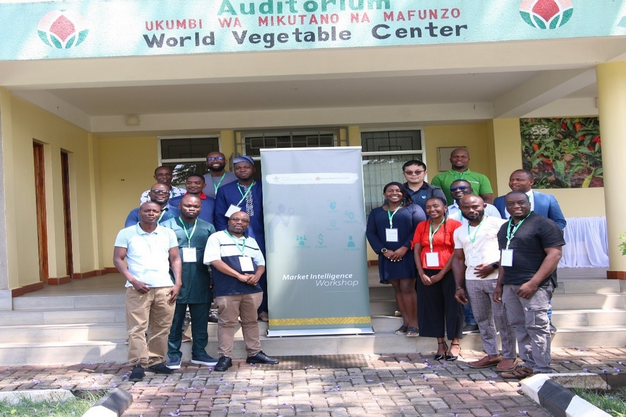The World Vegetable Center (WorldVeg), in collaboration with the CGIAR Initiative on Market Intelligence, hosted a pivotal workshop on tomato and pepper market segmentation for Central and Southern Africa on 23–24 October in Arusha, Tanzania. The event attracted representatives from universities, including from National Agricultural Research and Extension Systems (NARES), and key private sector players from across Gabon, Cameroon, Eswatini, Zambia, Zimbabwe, Botswana, Southern Africa, and Malawi, fostering a cross-regional exchange of insights and best practices. During the workshop, participants identified more than 30 distinct market segments for tomatoes and nearly 115 segments for peppers. These findings will be integrated into the Global Market Intelligence Platform (GloMIP), making the information readily accessible to stakeholders across the agricultural value chain.

Agnes Gitonga from the International Maize and Wheat Improvement Center (CIMMYT) opened the workshop with a presentation to introduce CGIAR's market segmentation framework that has been used to identify market segments across all crops served by CGIAR, as captured in the Seed Product Market Segmentation Database hosted in GloMIP and the Breeding Portal. Her session provided participants with a common understanding that would guide discussions across the two days, setting the stage for deeper exploration into regional market demands and segmentation dynamics.
The first day focused on the tomato sector, with Mathieu Ayenan from WorldVeg leading discussions on distinct market preferences for tomatoes. Participants highlighted the significant role of protected tomato crops in Southern Africa, where the round, determinate-type tomato is particularly popular. This trend marks a notable difference from other regions in Sub-Saharan Africa, underscoring the need for tailored breeding and production strategies to meet local market demands. The day concluded with an exclusive tour of the WorldVeg gene bank in Arusha, giving attendees a rare opportunity to view one of the world's most comprehensive collections of vegetable germplasm.

On the second day, the workshop shifted to the pepper market, led by Herbaud Zohoungbogbo from WorldVeg. Discussions centered around the stark contrasts between Central and Southern African preferences. In Central Africa, the market for peppers is heavily dominated by the habanero pepper, renowned for its spiciness, whereas Southern Africa's demand is primarily for the green, blocky bell pepper, a sweeter variety that makes this region unique in its preference for sweet pepper types. Chili peppers are cultivated throughout both Central and Southern Africa, where various market segments have been identified.
In addition to engaging sessions and insightful discussions, participants had the chance to tour WorldVeg's field operations in Arusha, where they observed active research and breeding projects aimed at enhancing crop productivity and resilience.
Source: CGIAR
